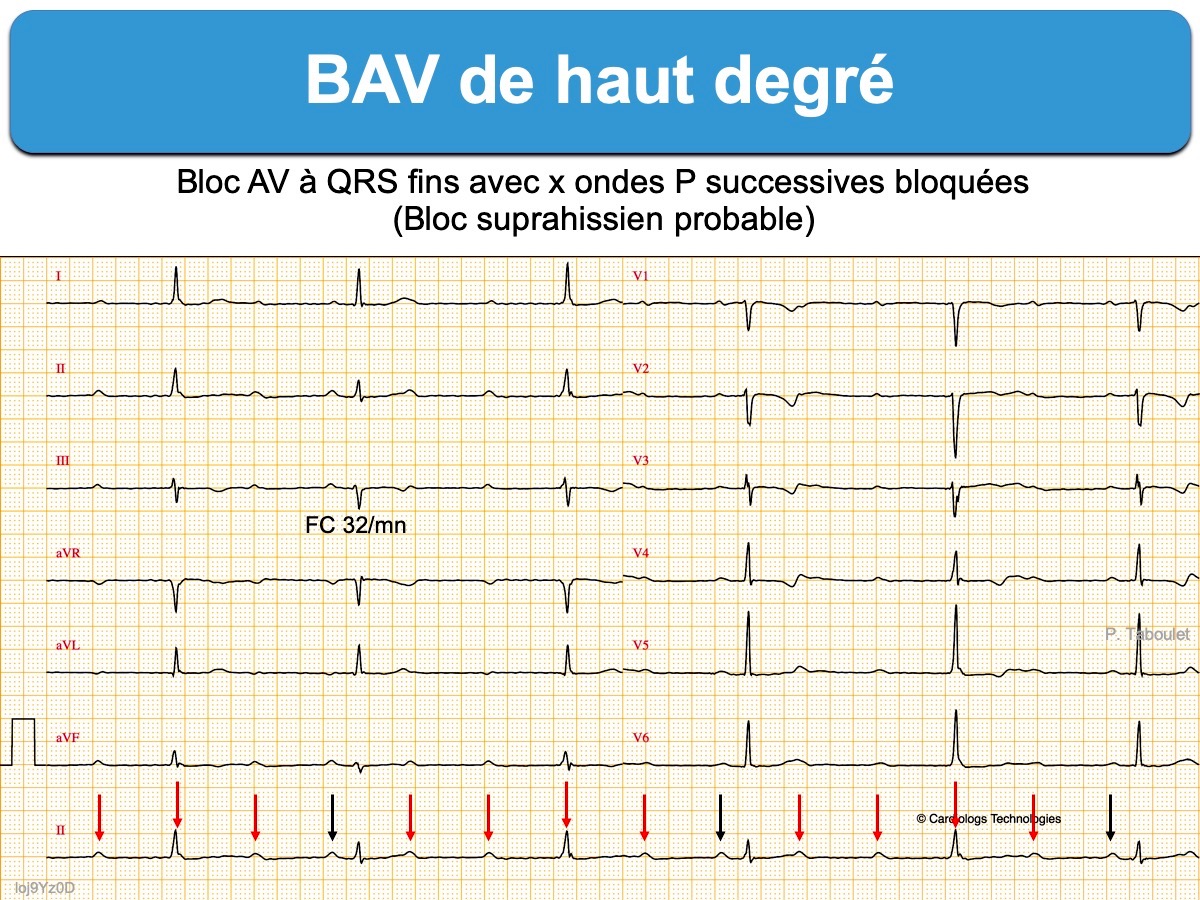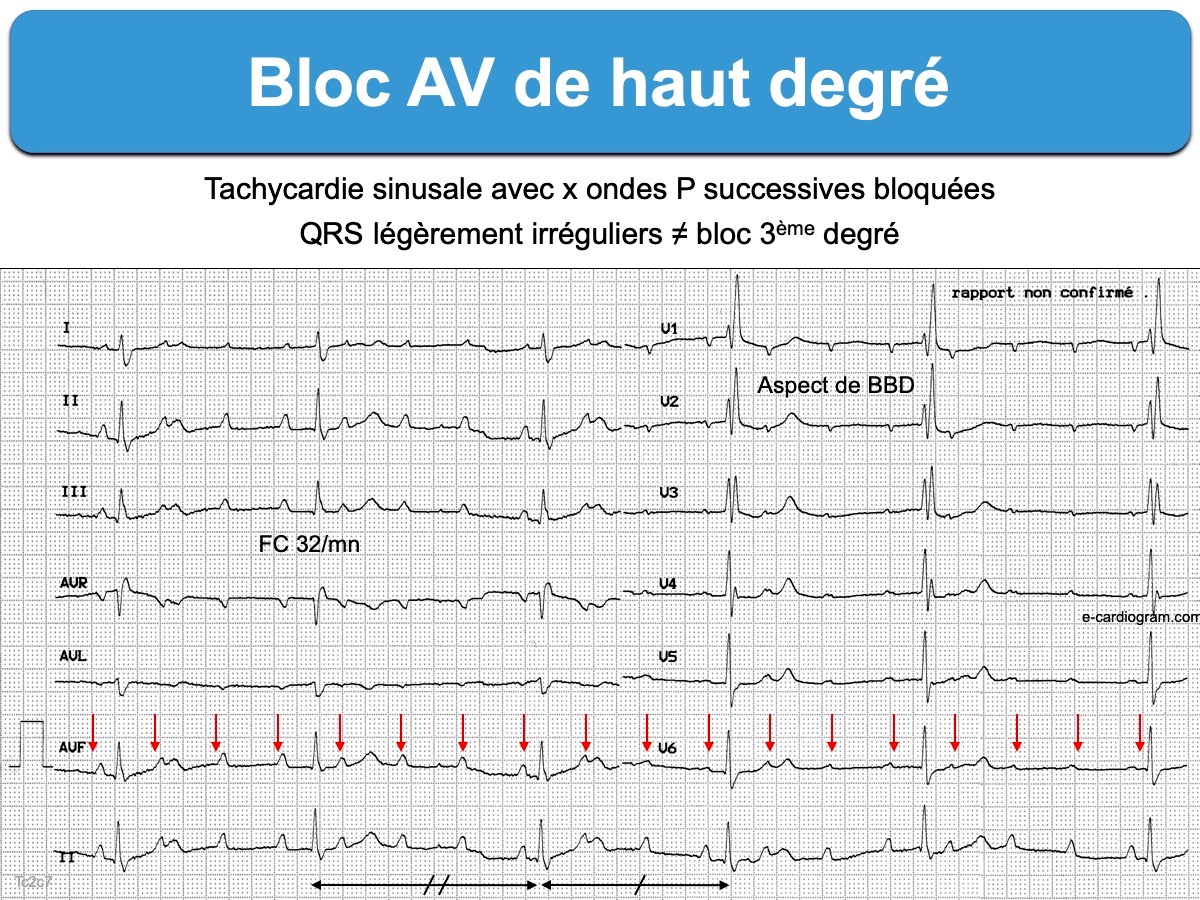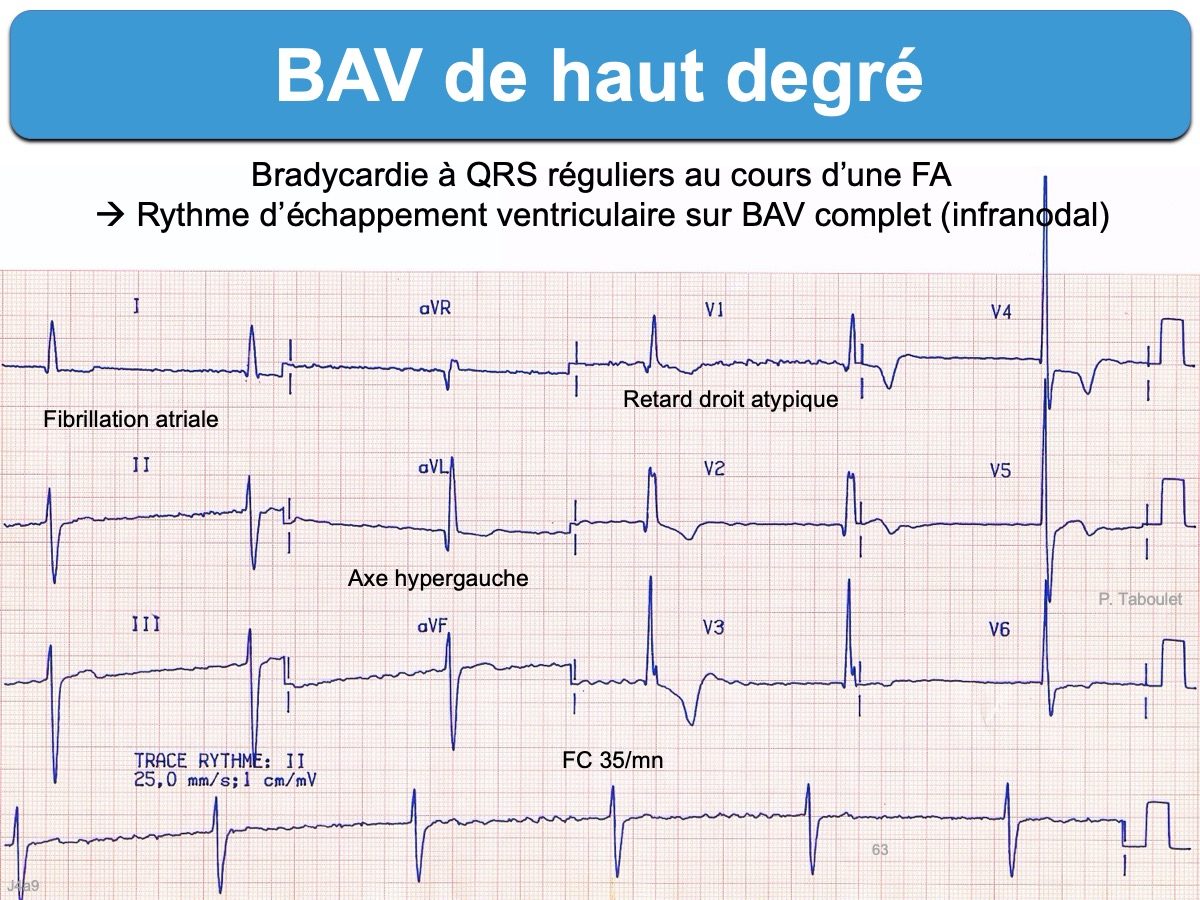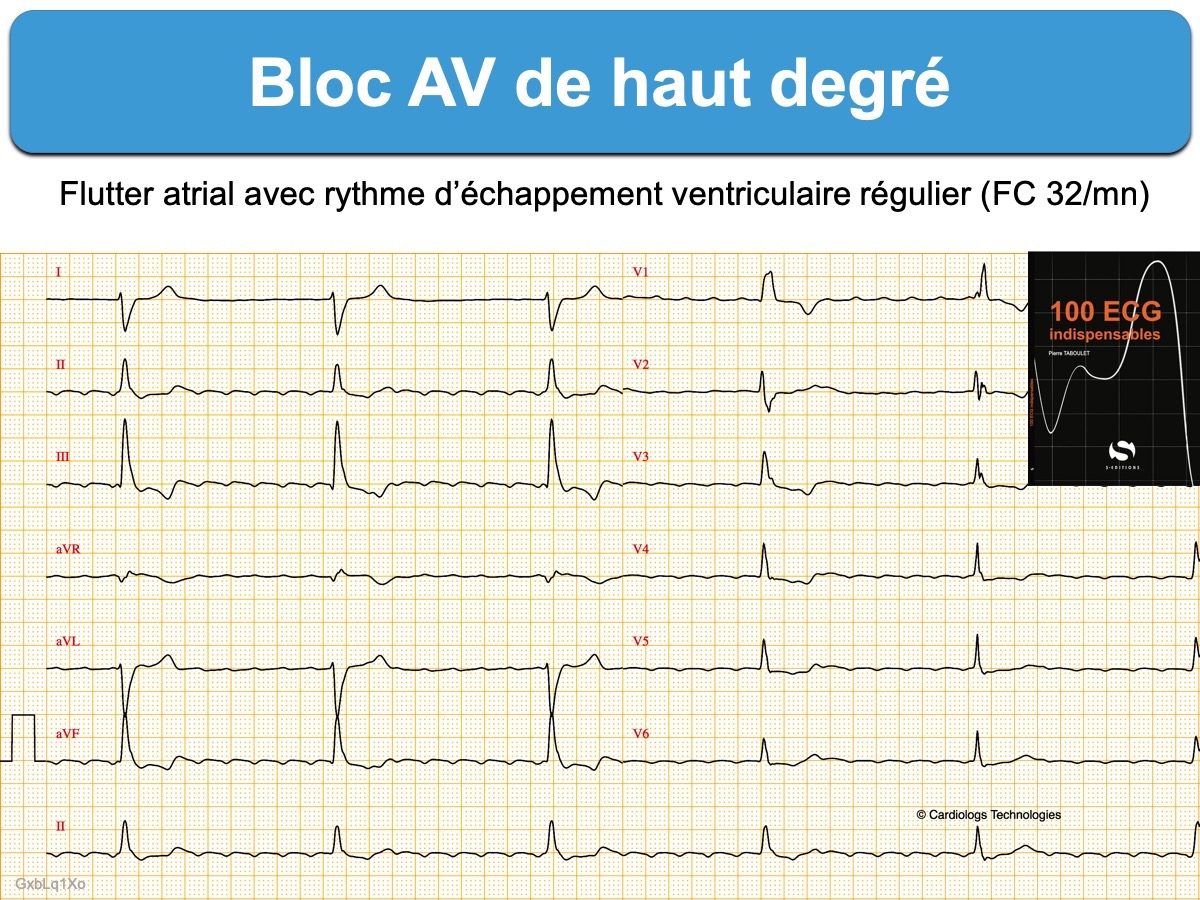Définitions
En rythme sinusal :
- Interruption complète de la conduction AV concernant plusieurs impulsions sinusales successives (ex. bloc 3:1, 4:1…) avec une pause de durée multiple de l’intervalle R-R
- Alternance de bloc AV proximal (avec Mobitz 1) et bloc AV distal (avec bloc 2/1) [1]
- Alternance – selon la cadence sinusale – entre un BAV II Mobitz 2 et un BAV III.
En fibrillation atrial ou flutter :
- si la cadence ventriculaire est lente et irrégulière (ex. < 45/min) avec parfois des complexes QRS d’échappement ou électroentraînés
- si la cadence ventriculaire est lente et régulière (ex. < 40/min). Les complexes QRS réguliers (fins ou larges) traduisent alors une dissociation AV et donc un bloc AV “complet”. On ne parle pas de bloc AV III car le rythme n’est pas sinusal (Cf. Conduction cachée).
- s’il existe au moins une pause prolongée (ex. ≥ 5 sec).
[1] Cas clinique : challenge ECG (Circulation) : Chuang YT, Ueng KC, Tsai CF. Grouped Beating After Acute Inferior Myocardial Infarction. Circulation. 2021 Nov 2;144(18):1518-1520. doi: 10.1161/CIRCULATIONAHA.121.056366. Epub 2021 Nov 1. PMID: 34723635. (téléchargeable) –> Alternating beat Wenckebach periods characterized by episodes of 2:1 atrioventricular block in which progressive prolongation of the conducted beats PR intervals is terminated by 2 or 3 sequentially blocked P waves.
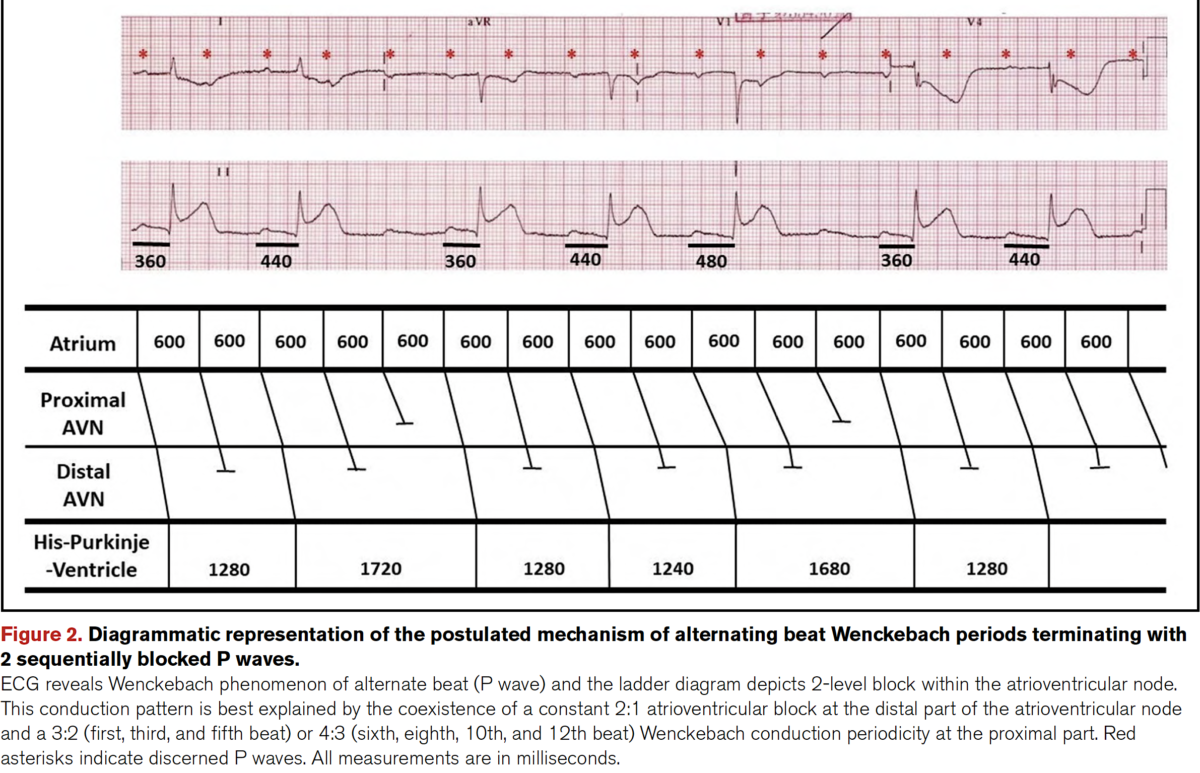
Fig 1 This conduction pattern is best explained by the coexistence of a constant 2:1 atrioventricular block at the distal part of the atrioventricular node and a 3:2 (first, third, and fifth beat) or 4:3 (sixth, eighth, 10th, and 12th beat) Wenckebach conduction periodicity at the proximal part

